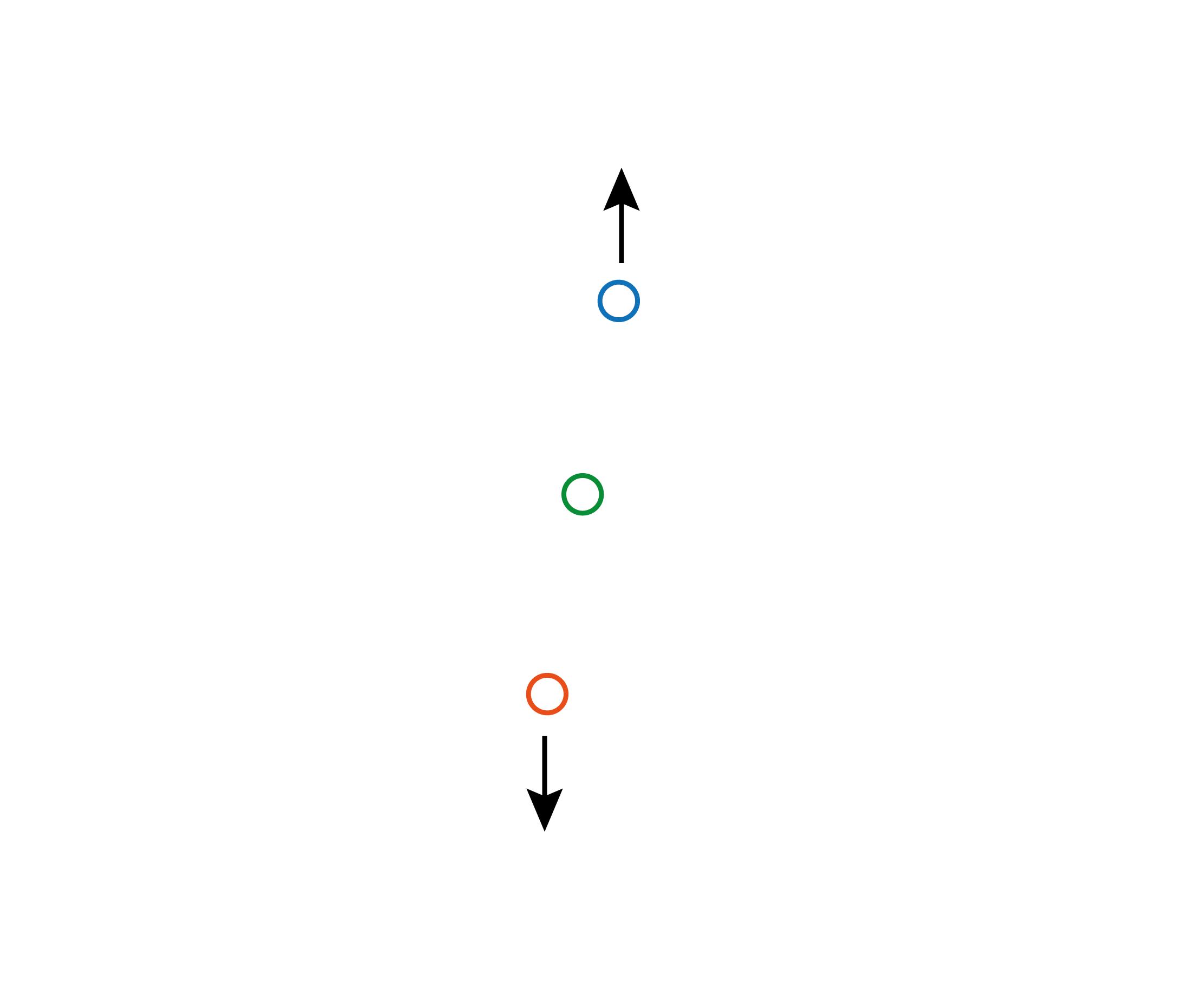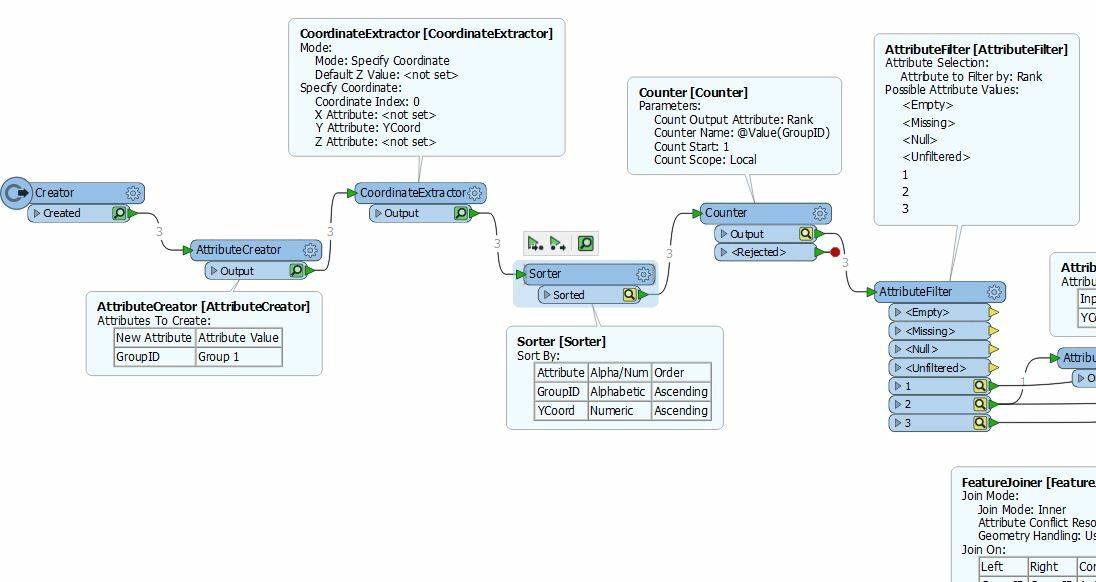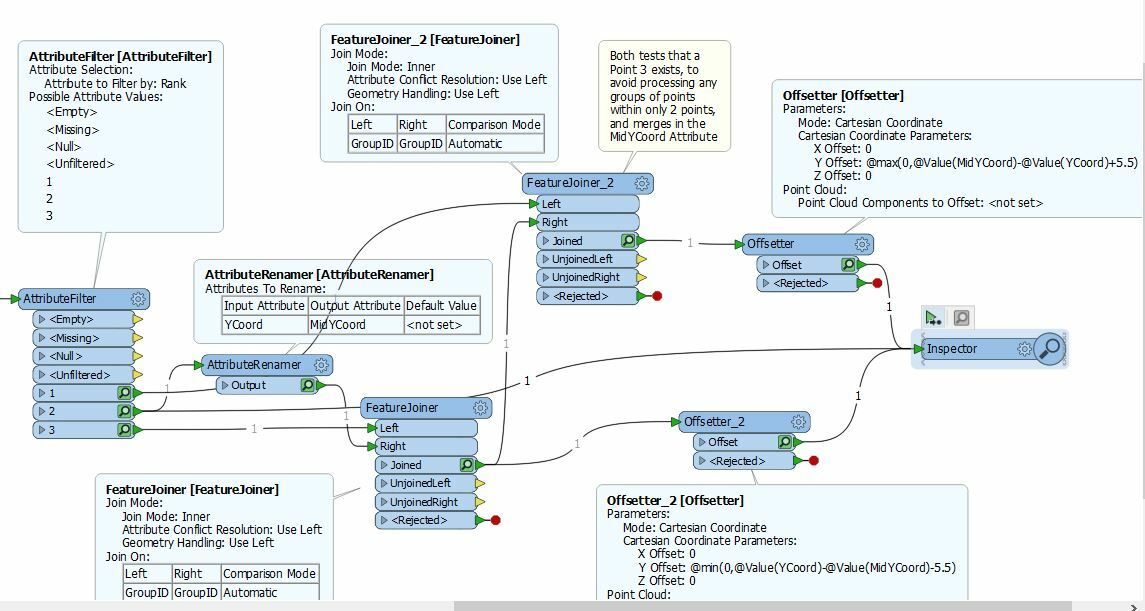I would like to increase the distance between groups of points, like what you see below. I have them "grouped" by common attribute so figuring out who belongs is taken care of. But I have not figured out how to get their position in relation to each other. The one in the middle is to stay put while the one on top moves up, and the one below moves down. How can I figure out which one is the "upper" and which one is the "bottomer"? This is necessary in order to move them in the right direction. I only want to move them in the Y direction. Also please note that there are 3 points in this example, but I also have some groups with only 2 members.
I was thinking maybe I could use a CoordinateExtractor to get the Y values for all members in the group. But then I get stuck what to do next? My guess is that it could be solved with a TestFilter and some wizardry in the Artimetric Editor, but I don't know how.
In the final step I plan to use the VertexCreator to set the new position.













